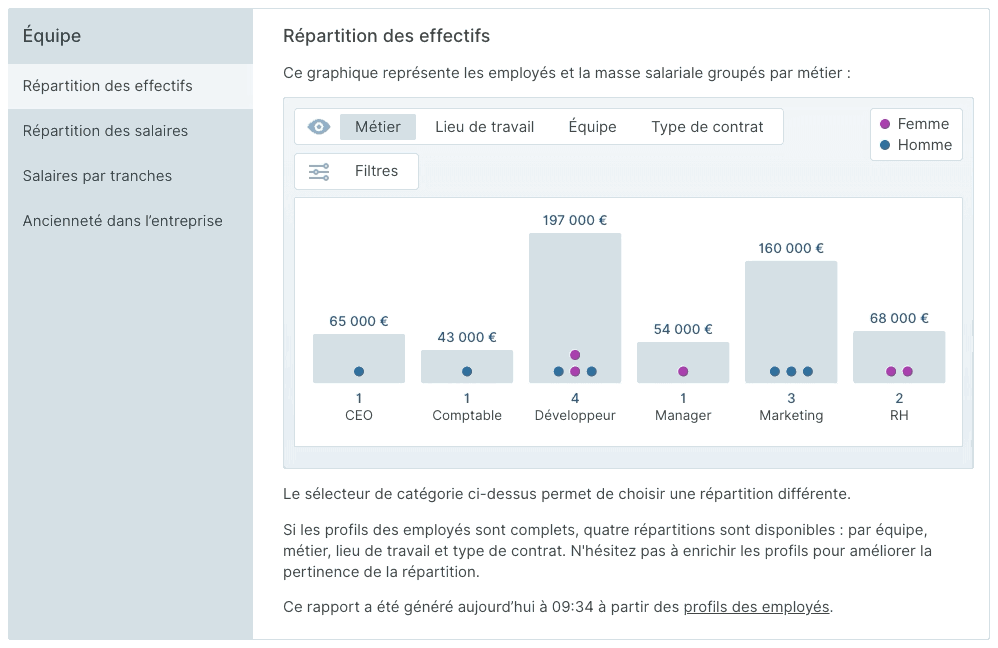Using the dashboard
The Dashboard is the home page that brings together a collection of statistics and interactive reports about your business. The Dashboard is available after you import your employees and before creating a salary pay scale.
The available reports are:
- The distribution of the workforce: makes it possible to compare the total payroll and the number of employees by category (profession, team, place of work, etc.).
- The distribution of wages: shows the positioning of wages among employees within a category.
- The wage brackets: a distribution of the number of employees per wage bracket, in increments of €10,000.
- The seniority in the company: gives an idea of the correlation between salary evolution and seniority.
Interactive reports
Each report allows you to view information from several angles:

The category selector is based on the information provided during the import of employees to categorize them. After the creation of the pay scale, new categories will appear, offering you new angles of analysis.
The filter selector allows you to choose filter criteria based on the categories and zoom in on a specific segment of the team.
What is it useful for?
Visual representation of information is an accessible way to identify unusual patterns and values. The visualization of data has an exploratory role, offering you a new perspective on information that you already have. By playing with the filters and categories, you’re able to compare the information more quickly than if it were presented only in text.
The main objective is to analyze your employees and their salaries in order to control your budget. This can represent the vast majority of expenses for the company. By calculating the payroll ratio divided by your turnover, you can, for example, compare your payroll to the average ratio of your sector of activity (data available from federations or associations of professionals).
By looking at the staffing and salary reports by Team and Business, you’ll be able to compare the differences between employees and have a first glimpse of possible disparities. The creation of a salary pay scale will be an opportunity to question those differences and justify or correct them.
This information can support your own internal reports, which you can then transmit:
- To the financial direction;
- IORPs (representative staff institutions);
- Or to feed the BDES (Economic and Social Database) in particular for its info concerning the professional equality between women and men, remuneration of employees and managers, general conditions of employment, etc.